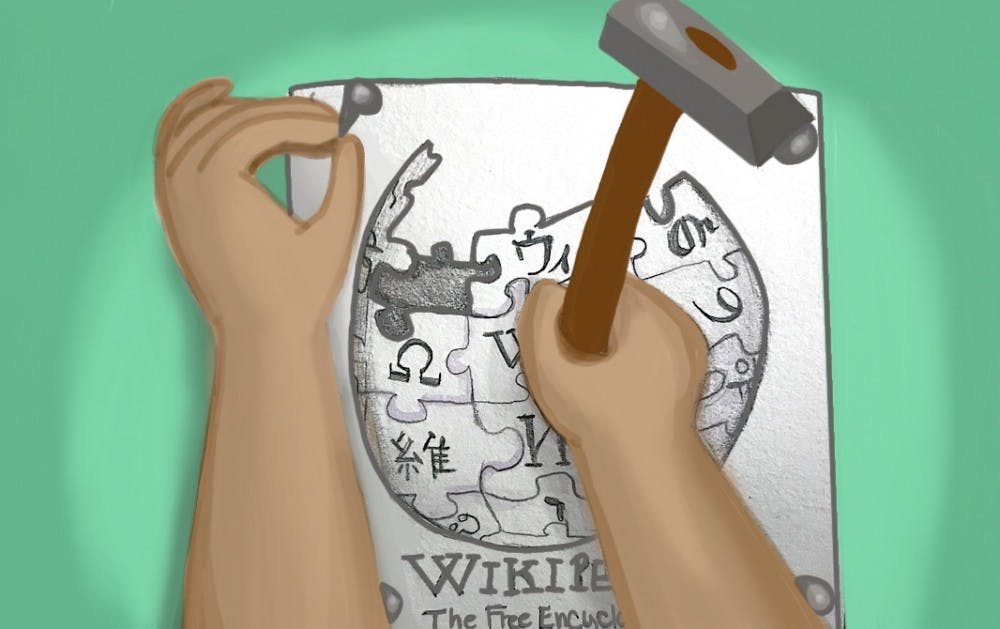A class at ASU teaching the societal impacts of Stalinism is as a side-effect rehabbing the reputation of Wikipedia, the online encyclopedia loathed by professors and notorious for its sometimes dubiously factual nature.
Benjamin Beresford, faculty associate at the School of Historical, Philosophical and Religious Studies, taught the online course Stalinism Society and Culture in the USSR 1924 to 1953 for the first time last spring.
This course partners with Wiki Education, which allows classes to be run in conjunction with the website. The ultimate goal is for students to improve an article on Wikipedia.
He first heard about the Wiki Education program from an NPR article in 2017, in which the company said it was looking for professors to partner with. He was excited that his students would have an article available to the public.
Beresford chose to focus his students on articles within the Soviet Union Wikipedia project, which includes many stubs and starts — Wikipedia articles that lack content and sources — that need beefing up. This pool of articles gives his students 1,642 pieces they could potentially edit and contribute to.
“Before you even do the research, students go through and they find Wikipedia articles that are underdeveloped,” Beresford said. “They have to analyze and say ‘How well-sourced is it? What kind of sources are being used? Are they high quality? What kind of bias do we see?’”
Beresford said the Wikipedia exercise trains students to distinguish bad and good information online.
He said students should always make sure to analyze the Wikipedia article they’re looking at for accuracy. Some articles, like the one on String Theory for example, are nearly 100 percent accurate, so they are locked from any editing. Others are not as rigorously fact-checked.
“If you’re doing research and teachers say you can’t use Wikipedia as a source, don’t rely on Wikipedia, I still think that that’s important to keep in mind if you’re doing a research project, it’s a good place for starter information,” Beresford said.
Students can study the “Talk page” of any Wikipedia article to see edit history and comments on needed improvements.
Joe Cantu is an ASU online history and sociology major using the Starbucks College Achievement Plan to obtain his degree. Jay Rowland, an ASU online history major, and Cantu led their student group in the class to create an article on “Evacuation in the Soviet Union during WWII." Cantu said he really enjoyed this project.
They turned a four-source article of about 150 words into a well-written 35-source article featuring 8 sections. Their group's piece was recognized by WikiEdu for being well-written and well-sourced.
“We had to keep a non-biased approach in the article, which was a little different from previous papers and also just making sure that all the sources were really good sources and not biased sources,” he said.
Cantu said he hopes more students get a chance to try out this kind of work in classroom.
Cassidy Villeneuve, communications associate at the WikiEdu group, said in an email that there is no approval process for Wikipedia edits as such but that are mechanisms in place to ensure accuracy. There are thousands of volunteer editors on Wikipedia who watch for new changes and often catch trolls within minutes on popular articles. Important and controversial articles are given automatic edit protection from edit wars and vandalism.
Villeneuve said Wiki Education is currently connected to over 500 universities, encompassing 2,400 courses and 50,000 students who have worked on 68,000 articles adding a total of 47 million words. She said the program's small staff has facilitated significant growth since it launched seven years ago.
“I wanted to have my stuff together. I wanted it to be as accurate as possible," Rowland said. "I can just hear (an expert) mumble under his breath ‘These dang Americans don’t know what they're talking about.'"
Rowland, a U.S. Marine Corps veteran who studies the Civil War, said he wanted his article about Stalinism to meet the same standards as his research on the Civil War.
“One paragraph had three sources for eight to nine sentences. They really wanted you to be as accurate as possible, and it’s a little bit of a headache especially if you’re not a subject expert,” Rowland said.
Over 1,000 people looked at the article as it was being edited, according to the course website, so maintaining accuracy was key in the 32,000 characters that Rowland's group added.
He said he sees this Wikipedia system as a way for students to connect more with their work than they would in the typical paper.
“I think it’d be more fulfilling (for) them because with a regular paper they turn it in, and the teacher gives it back to them, and they take it home and store it somewhere in the closet," Rowland said.
Correction: A previous version of this article misidentified Wiki Education as Wikipedia Education. The article has been updated to reflect this change.
Reach the reporter at egilchr1@asu.edu or follow @Ethan_G45 on Twitter.
Like The State Press on Facebook and follow @statepress on Twitter.




